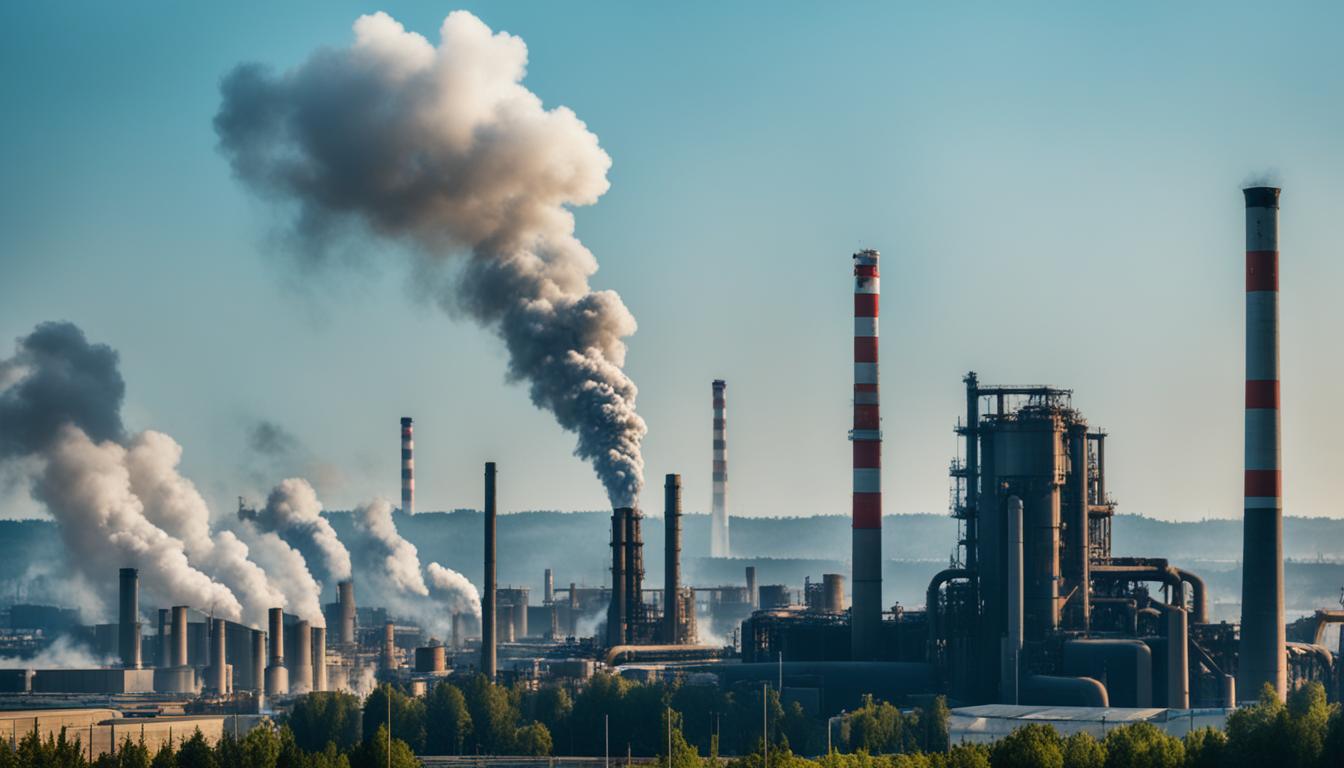The concept of state sponsored industrialization remains a pivotal cornerstone in the pursuit of government-led economic growth. This approach, steeped in historical significance, serves as a catalyst for nations vying to restructure their economies from simple agrarian systems to complex industrial powerhouses. Through strategic industrial policies, governments worldwide have successfully navigated the intricate paths leading towards modern economic development. The objective of this section is to unravel the complexities of state involvement in industry and commerce, offering a nuanced exploration into its fundamental underpinnings, historical precedents, and present-day implications.
Key Takeaways
- Insight into the motivation and objectives underlying state sponsored industrialization.
- Analytical overview of how government-led economic growth has shaped historical industrial revolutions.
- Examination of contemporary industrial policies and their role in current economic development agendas.
- Understanding the nuances and complexities that accompany the practice of state driven industrialization.
- Recognition of state sponsored industrialization as a significant factor in a nation’s economic trajectory.
Understanding the Concept of State Sponsored Industrialization
The term state sponsored industrialization is synonymous with an economic landscape shaped by the firm hand of the government. It represents an era where visions of government-led economic growth are brought to life through strategic planning and substantial state intervention. In exploring this concept, it’s essential to dissect the inception of such policies, analyze the historical precedents, and understand their enduring effects on contemporary economic paradigms.
The Genesis and Rationale Behind Government-Led Economic Growth
At the core of state sponsored industrialization is the belief that government action can catalyze industrial development, especially in regions lagging behind in economic prosperity. This is not a recent phenomenon; the notion of government-led economic growth has deep historical roots. Governments adopt strategic industrial policies with an eye towards galvanizing and safeguarding national industries, often to stimulate job creation, foster innovation, and amplify international competitiveness.
Historical Examples of State Driven Industrial Advancements
Historical instances of state driven industrial advancements are in great abundance, spanning across continents and centuries. Many East Asian economies exemplify the success stories of meticulously crafted industrial policies and state-led models. These nations have demonstrated how strategic government intervention in sectors such as technology and manufacturing can yield sustained economic development.
Impact of Industrial Policies on Modern Economic Development
The intricate dance between industrial policies and modern economic development continues to intrigue policymakers and economists alike. While the direct influence of such strategies is evident in today’s economic infrastructure, the intricate layers of their impact merit a thorough investigation. The prospects for stimulating innovation, upskilling the workforce, and steering economies towards high-value sectors are among the compelling arguments favoring state-sponsored trajectories.
| Aspect | State Intervention | Outcome |
|---|---|---|
| Technology and Innovation | Subsidies and funding for R&D | Advancements in tech and competitive edge |
| Job Creation | Supporting strategic industries | Reduction in unemployment, economic stimulation |
| Trade Competitiveness | Tailored industrial policies | Improved trade balance and global standing |
This table encapsulates the multifaceted nature of state sponsored industrialization, revealing how intricate policy mechanisms can incite profound economic transformations. It demonstrates how different aspects of industrialization, fostered through government action, have the potential to spur multi-tiered development—both within a nation and on the global stage.
What is State Sponsored Industrialization?
The definition of state sponsored industrialization refers to a process where a national government takes an active role in promoting and managing economic growth through direct involvement in industrial development. It encompasses a variety of government interventions including policy making, funding, and infrastructure development aimed at fostering a favorable environment for industrialization within its territory.

In essence, such a strategy is designed to propel a country towards greater economic robustness and diversification. It typically involves measures such as the establishment of special economic zones, subsidies for key industries, and the modernization of transport and communication networks. A clear historical parallel might be drawn with the industrial policies of East Asian economies during the late 20th century, which significantly accelerated their economic growth.
- Direct investment in critical industries
- Development of technologies and infrastructure
- Protection of nascent industries through tariffs and trade barriers
- Strategic partnerships with foreign entities
- Education and training programs to develop skilled labor
The end goal of state sponsored industrialization is to transition from an economy that is potentially reliant on agriculture or raw materials to a more diversified, industrial economy. Government intervention plays a pivotal role in this transition, focusing on areas where the private sector may not invest due to high risks or long return periods. It’s this injection of resources, both financial and intellectual, that can ignite the transformative change needed to build a more resilient and adaptable economy.
Analyzing the Transition From Agrarian to Industrial Societies
The pivotal transition from agrarian to industrial societies stands as one of the transformative epochs in human history. This period not only redefined economic practices but also had profound implications on the social fabric of nations worldwide. By delving into the factors such as technological innovations and analyzing the resulting social and legal responses, we can gain a richer understanding of this significant shift.

The Role of Technological Innovations in the Industrial Leap
At the heart of the transition from agrarian to industrial societies were innovative leaps in technology. Inventions like the steam engine and the spinning jenny revolutionized productivity, enabling mass production and spurring unprecedented economic growth. These technological innovations catalyzed the shift from manual labor to mechanized manufacturing, which defined the industrial era.
Displacement and Urbanization: Social Responses to Industrial Change
The move toward industrialization was not without its societal costs. The surge in factory jobs led to mass displacement and urbanization, as workers migrated from rural to urban areas seeking employment. This significant social response to industrial change caused a restructuring of family dynamics, demographic shifts, and the expansion of urban landscapes, presenting new challenges and opportunities.
Legislation and Labor Reforms During Industrial Transformation
To mitigate the disruptive effects of rapid industrialization on workers’ lives, governments were compelled to enact legislation and labor reforms. The introduction of laws regulating working hours, child labor, safety standards, and union rights were instrumental in shaping fair labor practices. These reforms laid the foundation for modern labor rights and are critical historical markers of societies adapting to the demands of industrialization.
The Geopolitical Implications of Industrialization Strategies
As nations strive for global competitiveness, the adoption of intricate industrialization strategies becomes pivotal in asserting their economic power. These strategies not only contribute to a nation’s economic fabric but also play a substantial role in shaping the geopolitics of regions and the international stage. Industrial prowess can shift the balance of power, attracting alliances, and sometimes creating friction among global titans. The intricate mesh of economic growth with geopolitical stability necessitates an evaluation of these strategies beyond mere figures of industrial output or GDP growth.
The geopolitical implications of industrialization are wide-reaching. Countries that successfully implement state-sponsored industrial policies often witness a surge in political clout, enabling them to influence global norms and international trade regulations. As a nation’s industrial sector thrives, so does its capacity to sway decisions within international bodies and bilateral relations. The consequent increase in a country’s stature on the global platform can affect everything from market access to foreign policy dialogues. Conversely, nations lagging in industrialization may find themselves at a strategic disadvantage, pressured to conform to the economic dictates of more robust nations.
Moreover, the manner in which a country pursues industrialization strategies can have profound effects not only on its own stability but also on the regional equilibrium. The quest for scarce resources, for instance, can lead to strained cross-border relationships, prompting a need for fine-tuned diplomatic engagements. Sustainable and collaborative industrial growth, on the other hand, could foster partnerships, aiding in regional stabilization and collective bargaining power. Ultimately, the ripple effects of industrialization strategies reach far into the domain of geopolitics, emphasizing their significance in a progressively interconnected world.





